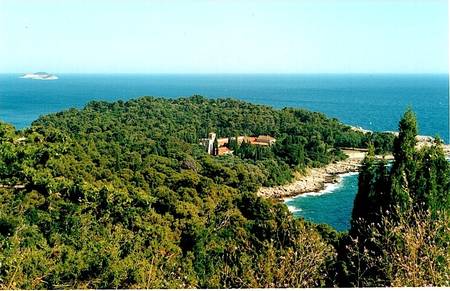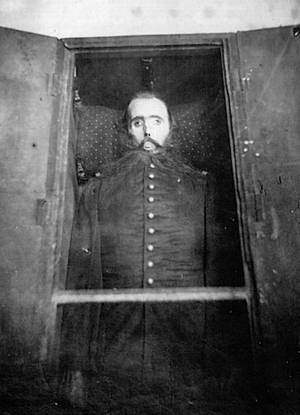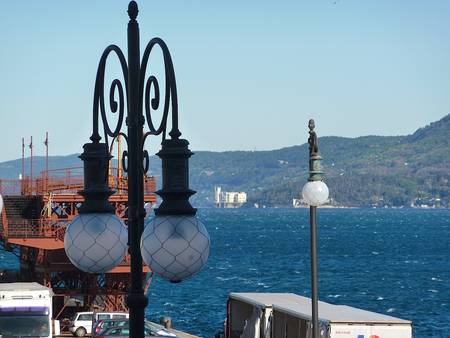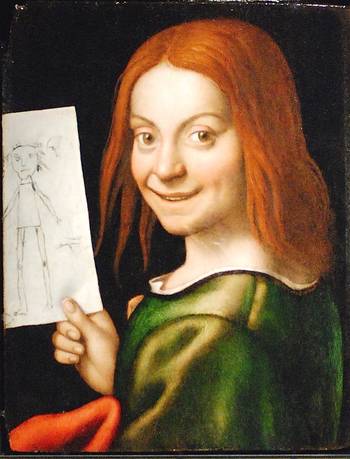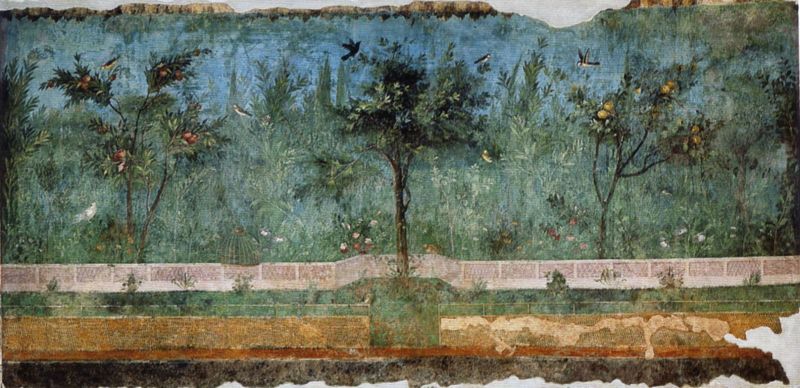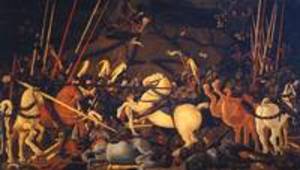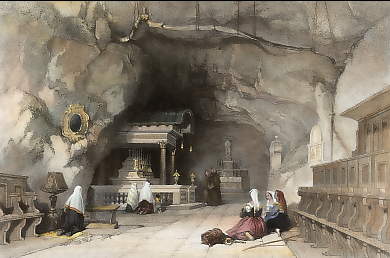International Gothic in Florence, 1375–1440 (and Paolo Uccello’s “Battle of San Romano” restored). Alta Macadam reports on an exhibition at the Galleria degli Uffizi, open until 4th November.
This large exhibition is a sequel to one held in 2008 entitled “The Legacy of Giotto. Art in Florence, 1340–75” and, given the longer time span that it covers, is perhaps rather less coherent than the previous show. Many artists have been included in an attempt to bring together different strands of artistic development in the city, and at times the sequence is rather confusing. The greatest artists usually connected to the movement known as International Gothic—Lorenzo Monaco and Gentile da Fabriano—are represented with only one work each. However, the exhibition has provided the opportunity for some important loans from abroad and it also gives prominence to many works in Florence and its environs little known to the general public, or not generally on view.
The earliest works include a Madonna and Child by Niccolò di Pietro Gerini from the lovely church of San Martino a Mensola (a few hundred metres below Villa I Tatti), which is displayed with its original side panels of four saints from the nearby church of San Lorenzo beside the castle of Vincigliata (the Italian state purchased them for the Uffizi last year). In the same room are two delightful wooden reliquary busts dating from the 1380s, one of St Andrew, also from the church of San Martino a Mensola (but up until now not on view there) and the other of a companion of St Ursula from the (little-visited) Museo di Santa Maria Novella. Another early piece of sculpture from the same period is a charming little sitting lion inpietra forte which was once just one of some twenty lions in the Loggia della Signoria, but for years has been hidden away in the over-crowded rooms of the Museo di Firenze Antica in the convent of San Marco. Another piece of early sculpture which has never before been prominently displayed is the very fine statuette of a prophet made for the Duomo by Lorenzo di Giovanni and which now belongs to the Bargello. Lorenzo’s father, Giovanni d’Ambrogio, is also well represented by two statues of the Annunciation made for the tympanum of the Porta della Mandorla of the Duomo (uncovered just a few months ago after many years of restoration). The virile classical head of the Madonna is particularly striking, showing the influence of Humanism. Also in a transitional style from the Gothic is the fine Annunciation from the Galleria dell’Accademia by the Master of the Straus Madonna (here tentatively identified with Ambrogio di Baldese). It has an unusual background with an open door as well as an interesting frame.
In the largest room in the exhibition no fewer than three of the huge original statues from the exterior of Orsanmichele are displayed. The curators had the good idea to add to the explanatory panel here that these are normally on show, together with all the other original statues from the exterior tabernacles, in the Museo di Orsanmichele (open every Monday), since this remains unjustly one of Florence’s least visited museums. The Orsanmichele statues chosen for the exhibition include the St Peter made for the guild of butchers, which has represented one of the most puzzling problems of attribution for generations of art historians. On this occasion both Ciuffagni and Donatello have been discarded in favour of a tentative suggestion that Brunelleschi’s hand may be detected, but in the end it has simply been attributed to an anonymous master called the “Maestro di San Pietro di Orsanmichele”. Also for some reason displayed in this room is one of the most lovely paintings in the entire exhibition, the littleAnnunciation from the Ashmolean Museum in Oxford. Formerly thought to be by the Sienese artist Pietro di Giovanni d’Ambrogio, it is here firmly attributed to Paolo Uccello. Gothic in spirit with a gold ground, this is a fascinating work, with the Madonna elegantly dressed in a robe matching the bright blue colour of the loggia. Another beautiful painting here, which is much better known, is Lorenzo Monaco’s Adoration of the Magi from the Uffizi. The exquisite fresco from Empoli of Christ in Pietà by Masolino is very well chosen, and this very important artist is also represented in a later room in the exhibition with his splendid painting of St Julian, dressed in crimson, from the Museo Diocesano di Santo Stefano a Ponte in Florence (a marvellous opportunity to see this work, as the museum is almost always closed).
A small room is devoted to the desert fathers known as the Thebaids (they lived in the desert around Thebes in Egypt), a subject which fascinated the painters of the time. Here the nine fragments from the Kunsthaus in Zurich by a Camaldolese monk called Giuliano Amadei are particularly interesting. However, the better known painting from the Uffizi collection of the lives of these early ascetics is displayed here without an author, and indeed the suggestion that it could even have been painted as late as the 18th century.
In the section entitled “The Sumptuary Arts”, there is a remarkable reliquary from the Badia di San Salvatore a Settimo, on the banks of the Arno west of Florence. Also from outside Florence, and little known to the general public, there is a very beautiful Madonna and Child enthroned with six Angels, dating from around 1424 by Arcangelo di Cola da Camerino (from the church of Santi Ippolito e Donato in Bibbiena in the Casentino).
Another room displays a very rare miniature portable altar from a private collection. In the form of a little shrine, it is simply decorated outside with green and white geometrical forms which recall the exterior of the Baptistery and San Miniato al Monte, and inside has paintings in watercolour on paper of the Madonna and Child with angels and (on the doors) the two patron saints of travellers (St Nicholas and St Julian). Given its size and fragility, it is extraordinary that it has survived for nearly six hundred years. It is attributed to the Master of the Sherman Predella, an anonymous master named from a small panel in the Boston Museum of Fine Arts which is fittingly displayed here beside it. This exquisite work is not in fact a predella but a panel with three scenes (the Martyrdom of St Agnes, the Flagellation of Christ with the Virgin swooning, and the penitent St Jerome) against a particularly remarkable background of dunes with a rough sea beyond, beneath a night sky. It includes a loggia which has decorations similar to the green lozenges painted on the exterior of the little portable altar.
The exhibition continues in the opposite wing of the Uffizi. The paintings here include a curious very small portrait of a young man from the Alana collection in New York attributed doubtfully to Masaccio, and two panels from the Quaratesi polyptch of St Nicholas in the Vatican by Gentile da Fabriano who is, perhaps surprisingly, not otherwise present in the exhibition. A fresco by the little-known painter Francesco d’Antonio di Bartolomeo from the church of San Niccolò Oltrarno representing St Ansanus is particularly delightful. An unusual painting which used to serve as the front of a wedding-chest representing an allegory of the Seven Liberal Arts by Giovanni del Ponte has been lent by the Prado in Madrid. There is also a Madonna and Child with saints and angels by the same artist from the little-visited church of San Salvatore al Monte, in its original frame. Numerous illuminated liturgical and devotional books, including a missal from Milan illustrated by Fra Angelico, accompany the paintings and sculptures. Two wooden Crucifixes are displayed opposite each other, one by Donatello from the convent of Bosco ai Frati in the Mugello and the other by Michelozzo from the church of San Niccolò Oltrarno.
The glorious conclusion of the exhibition is the Uffizi’s Battle of San Romano by Paolo Uccello, just restored. Now called The Unhorsing of Bernardino Ubaldini della Carda, Commander of the Sienese Troops (and illustrated at the top of this piece), it was the central one of the three famous panels commissioned by Ludovico Bartolini Salimbeni to commemorate the battle fought in the lower Valdarno in 1432 in which the Florentines were victorious over the Sienese (the other two panels are in the National Gallery of London and the Louvre). Lorenzo the Magnificent confiscated all three paintings from Salimbeni’s sons in 1484 so that he could enjoy them in his bedroom in Palazzo Medici. The original colours, with oranges and reds dominating, have been restored and the entire painting is now much more legible in all its extraordinary details. Multi-media supports and a video explain all its intricacies and the play of perspective used by Uccello, who was one of the last great painters in the Gothic style but whose works also show that he fully understood the significance of the arrival of the new Renaissance spirit in painting.
